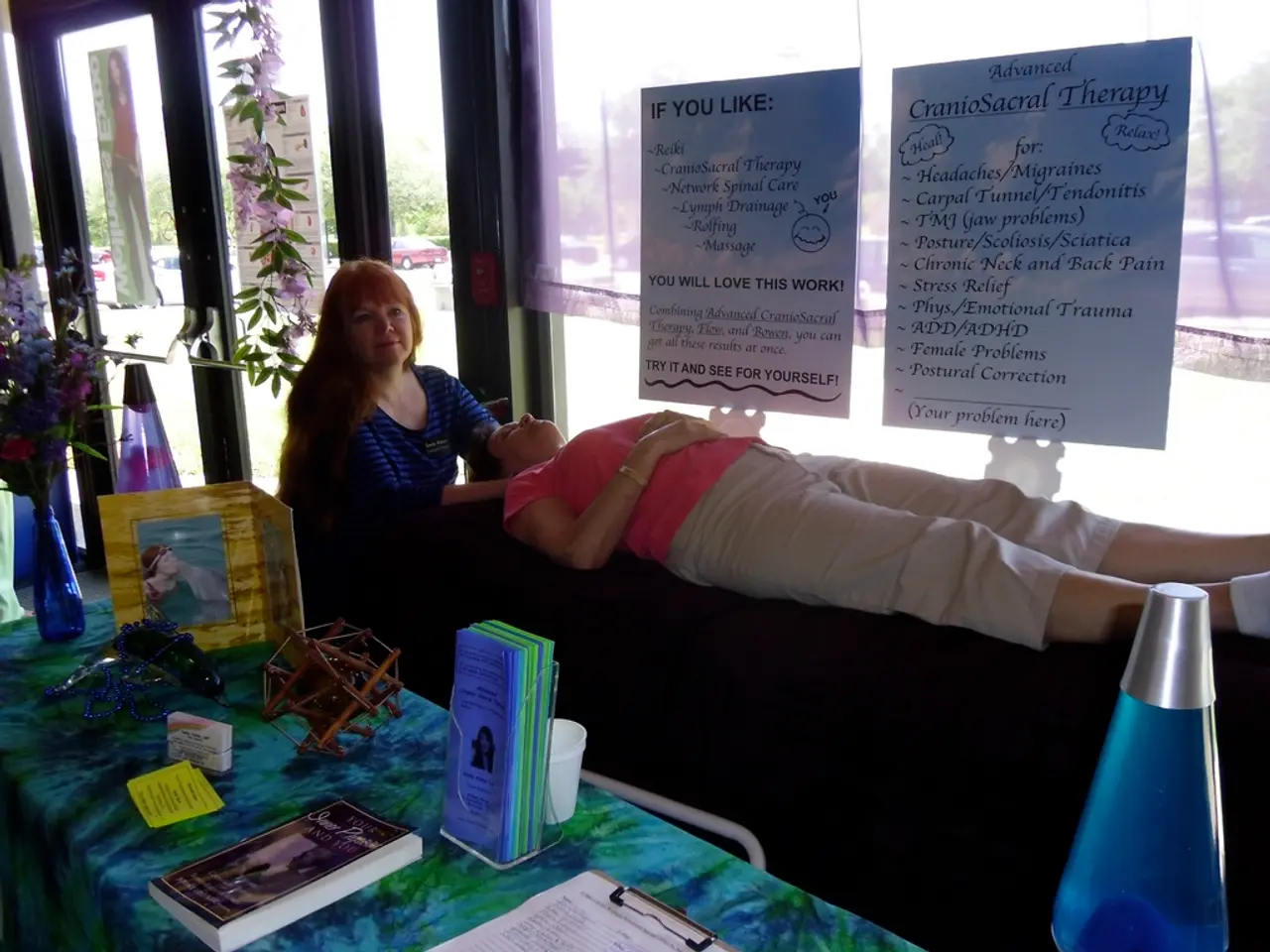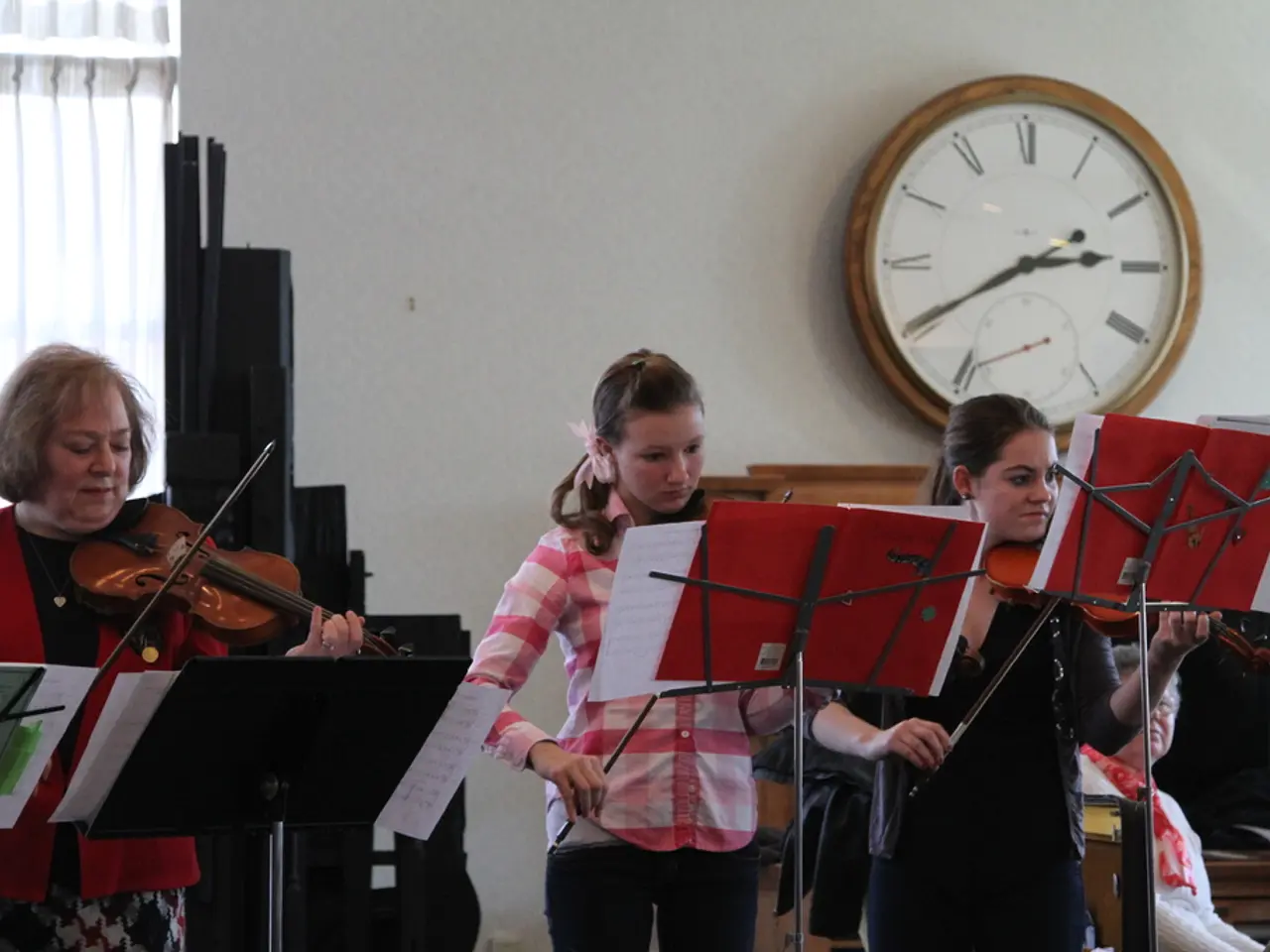Brain's Malleability & Body Workouts: Preserving Cognitive Ability
========================================================
In a world where cognitive decline is a growing concern, especially among the aging population, a simple solution to maintaining brain health has emerged: exercise. A wealth of scientific evidence supports the notion that regular physical activity can enhance neuroplasticity, the brain's ability to reorganize and form new neural connections, and thus improve cognitive functions.
Exercise elevates levels of brain-derived neurotrophic factor (BDNF), a protein essential for neuroplasticity and neurogenesis, particularly in the hippocampus, a critical area for learning and memory. This process helps maintain and improve cognitive functions and can partially reverse aspects of brain aging.
Aerobic activities, such as walking, running, or cycling, improve cardiovascular health, thereby increasing blood flow and oxygen delivery to the brain. This supports efficient energy metabolism and creates a healthier environment for brain cells to connect and adapt.
Resistance training, on the other hand, notably boosts BDNF, which correlates with improved memory and reduced age-related neurodegeneration.
Exercise also reactivates specific genes like ATPPIF1, which promote synaptic function and memory-related plasticity, and reduces harmful inflammatory cytokines while stimulating other growth factors such as vascular endothelial growth factor (VEGF), growth hormone, and IGF-1, all of which contribute to cognitive health and brain plasticity.
The total amount of hours spent exercising seems particularly relevant for the cognitive effects of exercise on the brain. Most significant gains in cognitive effects begin to occur after about cumulative 50 hours of exercise (over about 4-6 months), which is an average of 2 to 3 hours every week for 4-6 months.
Consult a physician or physical therapist before starting an exercise routine, but once underway, SMART goals (Specific, Measurable, Attainable, Relevant, Time-Bound) are crucial for setting exercise goals. Adherence (showing up consistently) is a major challenge in exercise regimens, but with clear, achievable objectives, it becomes easier to stick to a routine.
Regular exercise acts as a powerful, non-pharmacological method to promote neuroplasticity and mitigate brain aging. It could help prevent the loss of cognitive skills as we age, leading to faster processing of mental tasks and better problem-solving skills. In essence, it is possible to turn back the clock of aging in the brain by adopting an active lifestyle.
Scientists are working on studies to better understand the effects of exercise on different areas of the brain, and Dr. Joyce Gomes-Osman, a rehabilitation neuroscientist with a Ph.D. from the University of Miami Miller School of Medicine and a postdoctoral fellowship from Harvard Medical School, is at the forefront of this research.
The 'best' exercise regimen for promoting brain health may vary from person to person, but the consensus remains: regular exercise is vital for maintaining brain health and preventing cognitive decline. The free online platform memory game can help discover how one's brain compares with others and aid scientists in finding new ways to protect our brains from memory loss as we age. Embrace an active lifestyle today for a healthier, more cognitively sharp tomorrow.
[1] Hillman, C. H., Erickson, K. I., & Kramer, A. F. (2008). The influence of exercise on cognitive development. Nature Reviews Neuroscience, 9(7), 563-570.
[2] Voss, M. W., Colcombe, S. J., Hagberg, J. M., Clark, M. R., Just, M. A., & Kramer, A. F. (2013). The influence of exercise on human cognitive abilities. Nature Reviews Neuroscience, 14(7), 490-500.
[3] Colzato, L. S., & Hommel, B. (2013). Executive functions and their plasticity: the role of attention and action. Trends in Cognitive Sciences, 17(7), 355-364.
[4] Ivkovic, D., & Ivkovic, J. (2008). Physical exercise and brain plasticity: from molecules to behaviour. Neuroscience & Biobehavioral Reviews, 32(1), 119-136.
[5] Vaynman, A., & Gomez-Pinilla, F. (2006). Exercise, neuroplasticity and cognitive function. Trends in Neurosciences, 29(10), 513-522.
Precision aging science recognizes the potential of health-and-wellness practices, such as exercise, in slowing cognitive decline associated with aging. Science exhibits the effectiveness of fitness-and-exercise in increasing brain-derived neurotrophic factor (BDNF), thereby improving neuroplasticity, learning, and memory, and partially reversing aspects of brain aging.




